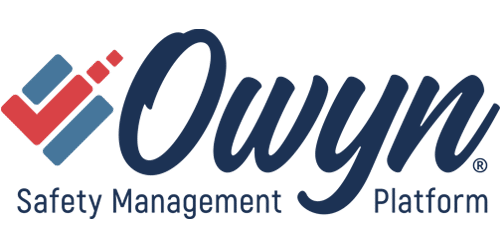Site Specific Safety Plans Provide Real Value – 12/12/22
Safety E-Quick Tip
OWYN Safety Mgmt Platform
Dec. 12, 2022
Site Specific Safety Plans Provide Real Value
Today employers are finding it tougher than ever to meet all their clients’ safety program requirements. With the high costs associated with accidents in the workplace, many of your clients are stepping up their game, requiring more and more.
So, what I’d like to talk about today is how to put together a site specific safety plan without completely rewriting your company safety program every time. Now don’t get the idea that there won’t be any work involved, but at least it might simplify things a little.
When I talk about site specific safety plans, there are a minimum of three items that will need to be addressed in your plan. The first is you need to determine the work you will be performing at the site; this is often referred to as the scope of work.
If you have a contract for the work that you will be doing, this should be an easy one to address because the scope should be spelled out in the contract and can be copied into your plan. If you don’t have a written contract, then you may have to spend a little time writing up the work that you’ll be performing on the site.
The second is to complete a Job Hazard Analysis (JHA) or similar forms, such as JSA’s or JTHA’s. These forms allow you to break down the tasks associated with completing the scope of work, determine the hazards associated with completing those tasks, and what you will need to do to prevent those hazards.
The third thing you will need to do is to make sure your plan covers any potential exposure to hazards created by others at the site where you are working. This is a step that is often overlooked because when people hear job-specific, they have the tendency to think only about the hazards being created by the work they are performing and not hazards caused by others at the site.
If your company safety program was designed with the understanding that you would need to protect your employees from hazards created by others, then this will already be addressed.
By taking your existing safety program and adding in a scope of work along with your completed JHA’s, you now have a site-specific plan.
To make your plan even more site specific, you may also choose or be asked to include a project name, a company organizational chart, a list of competent persons that will be onsite, and an emergency action and evacuation plan. If those are needed, you should be able to add those into your plan easily.
If you are not currently a client of OWYN Safety, you can also find free information online on how to prepare your plan. If you are a currently a client in the OWYN Safety Management Platform, you can develop your Site Specific Safety Plan quickly by just logging in to your account.
Employee QuickTip
Site Specific Safety Plans are another good tool that helps protect you from injury on the job. If your employer takes the time to prepare and review the plan with you, take that time to listen. It’s in your best interest.
Employer/Management QuickTip
Site Specific Safety Plans are a great way to provide your employees a safe worksite. But to be effective, they must be used. So, don’t spend all that time developing your plan only to keep it on the shelf or locked up inside your computer. Make sure management and employees review it on a regular basis to help ensure they are protected from hazards in the workplace.
Have you received your first Safety E-QuickTip or just want to look at past issues? Check out our Safety E-QuickTips Archive Page .
If you know of someone or a company that might benefit from receiving Safety E-QuickTips, please take a moment to share this with them so they can sign-up today.
Thanks for Reading and Please – “Have a Safe and Happy Holiday Season”.
